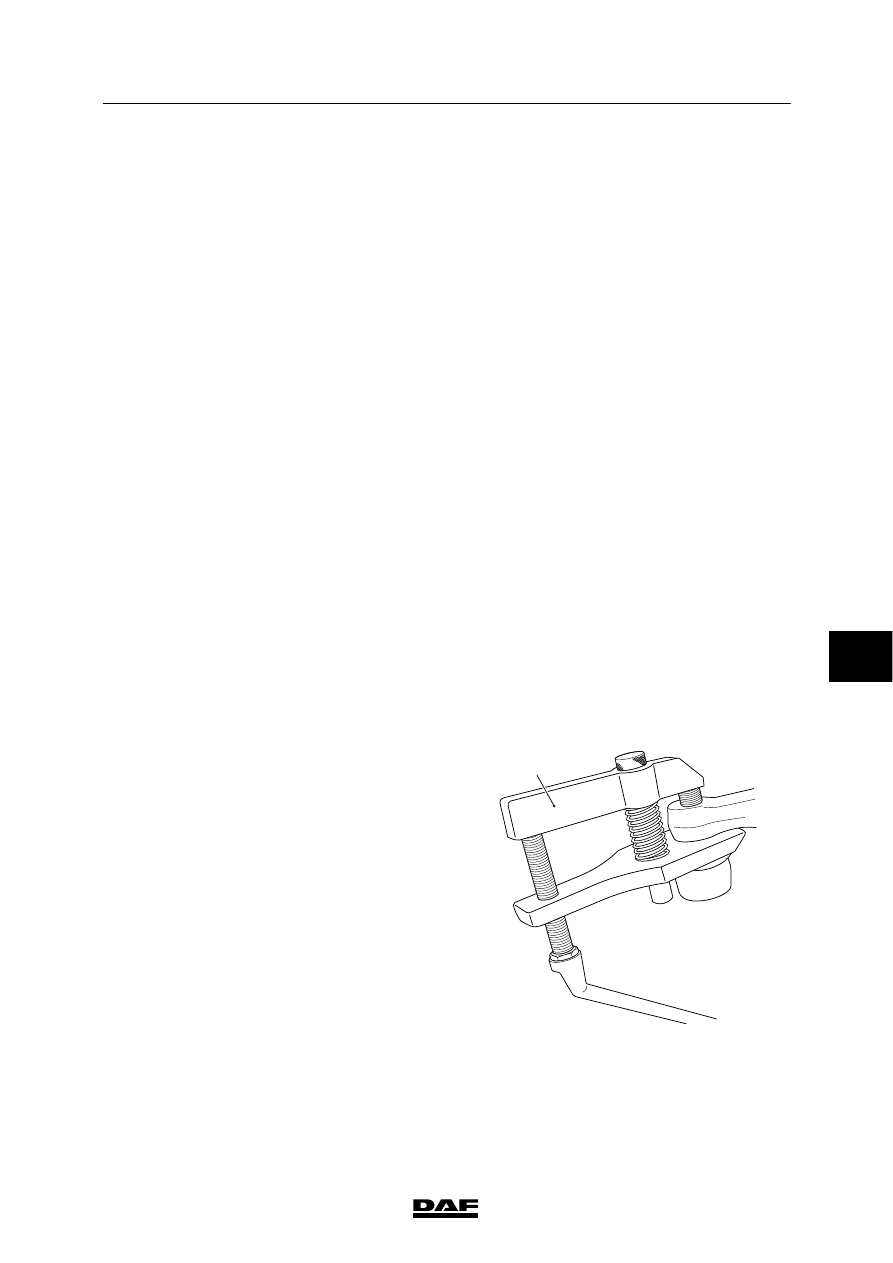DAF LF45, LF55 Series. Manual - part 531

7
LF45/55 series
Inspection and adjustment
FRONT AXLE, F60
2-3
2.3 INSPECTION AND ADJUSTMENT OF TOE
Checking toe
1.
Use a high quality tracking gauge or high
quality wheel alignment equipment for the
inspection. The gauge/equipment must be
calibrated regularly and preferably be of the
type that can be calibrated before every
use. Follow the instructions for the wheel
alignment equipment carefully.
2.
Ensure that the steering gear is free of
tension. If possible, drive the vehicle
straight ahead to the place where the
measurements will take place. If this is not
possible, drive forwards and backwards at
the place where the measurement will be
taken with the steering gear in the “straight
ahead” position.
3.
Check the toe with the vehicle unladen.
4.
Measure the axle toe. Compare the reading
to the specified value, see “Technical data”.
Note:
If a large difference is measured, the cause
must be traced. The deviation could have
been caused by excessive wear or by a
collision, during which components were
bent.
If so, the other steering gear components
should be inspected carefully.
Adjusting toe
1.
Remove the split pin and the castle nut.
2.
Take the ball end out of the track-rod arm
using a ball-end puller (A).
3.
Loosen the clamping bracket bolt until the
ball joint can be rotated.
4.
Set the correct toe (see “Technical data”) by
turning the ball joint in or out.
S7 00 555
A
7
ᓻ 200322